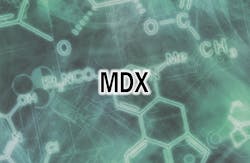Use of molecular assays differentiates between flu and COVID-19
Since the initial emergence of the SARS-CoV-2 virus in late December 2019, COVID-19 has evidenced many of the same respiratory-based symptoms as influenza. As the 2020-2021 flu season approaches, COVID-19 has already been associated globally with millions of deaths and many people in high-risk age and health categories are taking no chances in catching either disease. However, because of their similar onset of initial symptoms, clinicians are looking to use tests that can distinguish one disease from the other.
Similar yet different
By developing tests that are intended to confirm the existence of more than one virus, such as influenza A/B, RSV and/or SARS-CoV-2, cost-effectiveness of tests increases while time to results and treatment decreases.
According to Michelle Tabb, PhD, Chief Scientific Officer at DiaSorin Molecular, “RNA viruses such as influenza are well known to mutate or change from season to season. Because of this, molecular diagnostic companies with tests for RNA viruses such as influenza or SARS-CoV-2 face the challenge of identifying conserved regions of the viral genome to be used as targets for Reverse Transcriptase Polymerase Chain Reaction (RT-PCR) test design. Influenza virus has had a multitude of viral sequences identified over the past decades, which are available in public databases. This allows for an alignment comparison for identification of the most highly conserved regions, which can then be used as the best targets for RT-PCR assay design.”
She continued, “Most commercial manufacturers have developed influenza A and influenza B assays targeting the highly conserved matrix genes of each virus. However, with the emergence of a new virus such as SARS-CoV-2, there are fewer historical examples to use for designing a molecular assay. The recent, very rapid analysis of viral sequences available combined with comparison to previous coronavirus conserved sequences from SARS and MERS has led to the test designs available today. There are different examples of the gene targets and approaches employed for these test options.”
Focusing on the use of two different targets to detect SARS-CoV-2, Tabb added, “Some tests have taken the approach of using two different targets to identify SARS-CoV-2 including one target that is less specific that identifies the virus as a coronavirus family member paired with another target that is SARS-CoV-2 specific. These tests typically require that both the coronavirus target and the SARS-CoV-2 target are positive for a SARS-CoV-2 positive interpretation. Other tests have taken the approach of using two very specific SARS-CoV-2 target genes, and employed an algorithm allowing either one or both of the targets to be detected for a positive interpretation. Within these two approaches, there are many different SARS-CoV-2 specific genes that have been used as targets in these new test designs including RdRp, ORF1a, ORF1ab, S gene, E gene and N gene.”
Adding to Tabb’s comments is Garrett Heinrich, PhD, Application Scientist with Enzo Life Sciences. He asserted, “For influenza and SARS-CoV-2, laboratories are looking at RNA, viral protein, and human antibody to viral protein. Detecting viral RNA is the most sensitive method. Due to mutations and recombination testing for influenza, RNA can be limited to detecting types A and B, or additional considerations can be made to further detect subtypes based on the hemagglutinin and neuraminidase sequences.”
Assay speed versus accuracy
Tests that offer multi-identification disease results are only advantageous if they provide accuracy along with faster times to results. Elaborating further on the issue of speed versus accuracy, Heinrich asserted, “The COVID-19 pandemic struck at a time when our capabilities to sequence the viral genome are fairly advanced, but it still took time to determine the unique sequences present, develop the primer/probe assays, and make sure the tests for this novel coronavirus would detect the correct virus and ignore others. There still exists a tradeoff between speed versus accuracy in any testing for flu and SARS-CoV-2, but molecular nucleic acid testing remains the gold standard.”
He continued, “Rapid molecular assays, while they provide results in a shorter amount of time, do so at the cost of sensitivity. Standard molecular assays using RT-PCR are more sensitive and specific for detecting influenza and SARS-CoV-2, resulting in a lower likelihood of a false positive or false negative result. Most RT-PCR assays are generally more expensive.”
Multipurpose test availability
Heinrich forecasts increased efforts to address cost-effectiveness and reduced turnaround times in daily use test options. “Testing for SARS-CoV-2 has added a new strain to clinical laboratories that will soon also be facing the seasonal rise of influenza and common cold. To maximize resource efficiency and ensure minimal turnaround time, assays are being developed to simultaneously detect multiple threats. One example of an automated liquid handling platform allows the extraction of viral RNA and detection of influenza A/B, RSV, and SARS-CoV-2 concurrently.”
He continued, “An influenza and COVID panel acts as an important tool to test for the most common respiratory pathogens from a single swab. The ability to offer both tests from a single swab should help ease the pressures on supply chain. Instead of having two swabs and double the reagents testing COVID and flu together will alleviate time, resources, and costs. Laboratories will be faced with an unprecedented amount of respiratory testing this year, but they should continue to develop solutions to better integrate SARS-CoV-2 testing with the regular clinical lab workflow to maximize efficiency and cost-effectiveness through flexible platforms.”

